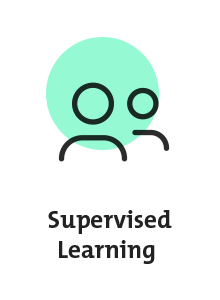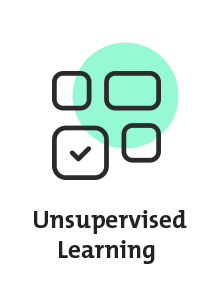
Machine Learning | – the brains behind AI
Reading time: 4 min
Artificial intelligences such as DALL-E or ChatGPT are currently making us marvel at what AI can do. But what are actually the basic learning mechanisms of AI and what are the types? AI engineer and AI expert Hans Torben Löfflad explains this in his guest article.
Many modern AI applications generate their knowledge through machine learning. For example, if an AI distinguishes apples from pears, the machine learning model behind it learns how apples differ from pears based on the pixels. But what are the actual types of machine learning? And for what applications are they used?
Supervised Learning
In supervised learning, the machine learning model is taken by the hand while learning. You can imagine Supervised Learning with the learning behaviors of young children. A child whose mother explains to him, “Look, that’s a duck and over there, that’s a swan!” learns to tell the two animals apart. The mother does not specify the characteristics that distinguish a duck from a swan. Rather, the child finds his own ways to distinguish the two animals.
Transferred to the Machine Learning model, the Data Scientist:in specifies features such as images or product specifications and so-called labels (duck, swan or prices).

Based on the data, the machine learning model makes a prediction about the label, which is compared to the true label. If the prediction deviates from the expected result, the machine learning model adjusts its decision rules with the goal of improving the prediction.
Unlike a child, however, the machine learning model requires many more examples to learn. Often we are talking about more than 10,000 examples.
The challenge of supervised learning
Supervised learning places high demands on the availability of data. Moreover, the high number of necessary examples implies a repetitive task that needs to be repeated often enough. Last, labeling the data can be a time-consuming effort within the project. Nevertheless, the fields of application of supervised learning are manifold and can be divided into two categories: Classification and Regression. As the name classification suggests, the examples are assigned to classes. For example, image data can be used to identify production defects or quality classes. In the case of regression, the goal is to predict a specific value. This can be used, for example, to predict prices or the remaining life of a production machine using sensor data.
Unsupervised Learning
Contrary to supervised learning is unsupervised learning. Here, the machine learning model identifies groups or clusters from the data without any prior knowledge.
This means that here “drawers” are filled without any prejudices. Rather, each entry is compared to the other and , after careful consideration, placed in the correct drawer. Whether a fixed number of entries is filled in each drawer or a fixed number of drawers with any number of entries depends on the algorithm.

For this purpose, the Data Scientist:in specifies characteristics such as customer information or sensor data. Based on the data, the machine learning model determines the similarity of the individual entries to each other. Customers who buy a laptop or a smartphone are more similar to each other than customers who buy makeup. Based on the similarity of the entries to each other, the groups or clusters are formed.
What is the case for Unsupervised Learning?
The major advantage of unsupervised learning over supervised learning is that no labeled data is required. This reduces the data collection effort enormously. At the same time, the formed groups and clusters may have undesirable characteristics. For example, if a product recommendation is made based on the grouping of purchases, then in the example above, the makeup purchaser will probably also be recommended mascara, even though the makeup was a one-time purchase for Halloween and therefore inappropriate. With the necessary caution, unsupervised learning techniques represent a powerful tool that can not only provide new insights, but also promise high added value with a wide range of possible applications. Both customer segmentation and recommendation systems are essential for an individual and up-to-date customer approach. However, it is also possible to use unsupervised learning techniques to monitor the condition of production equipment.
Reinforcement Learning
Reinforcement learning takes a slightly different approach. Decisive for the learning success of the machine learning model here are feedback and interaction with the environment. Reinforcement learning can be compared to raising a pet. If the dog obeys the master’s commands, a treat beckons. If he does what he wants, the reward will not come. If the dog tries a lot of things at first, he will learn the desired behavior over time.
Transferred to the machine learning model, it is the task of the data scientist to work out the right reward strategy and to provide the system with the required data. If the model now interacts with the environment, it is imperative to monitor the learning progress of the system and to intervene if necessary.

The Challenge of Reinforcement Learning
This is where the biggest challenge in working with reinforcement learning becomes apparent, because the learned behavior and the desired behavior can diverge. The big challenge here is to choose the right incentive system. If this succeeds, it is possible to automate complex tasks. Conceivable here, for example, are route planning for delivery vehicles. Another use case is the optimization of production planning. With the help of a digital twin, production can be simulated as often as required and production planning optimized according to the current order situation.
Machine Learning: All types at a glance

– The high number of necessary examples

+ Explorative process, which allows to gain new insights
– Clusters can have undesirable characteristics

+ Future consequences are taken into account
– Conditions must be evaluated
– Learned and desired behavior can diverge
Slain? We make it easy for you to get started. Whether you have your own use case and need support with implementation or you want to learn more about the topic of AI. Our AI experts will support you in your project.
